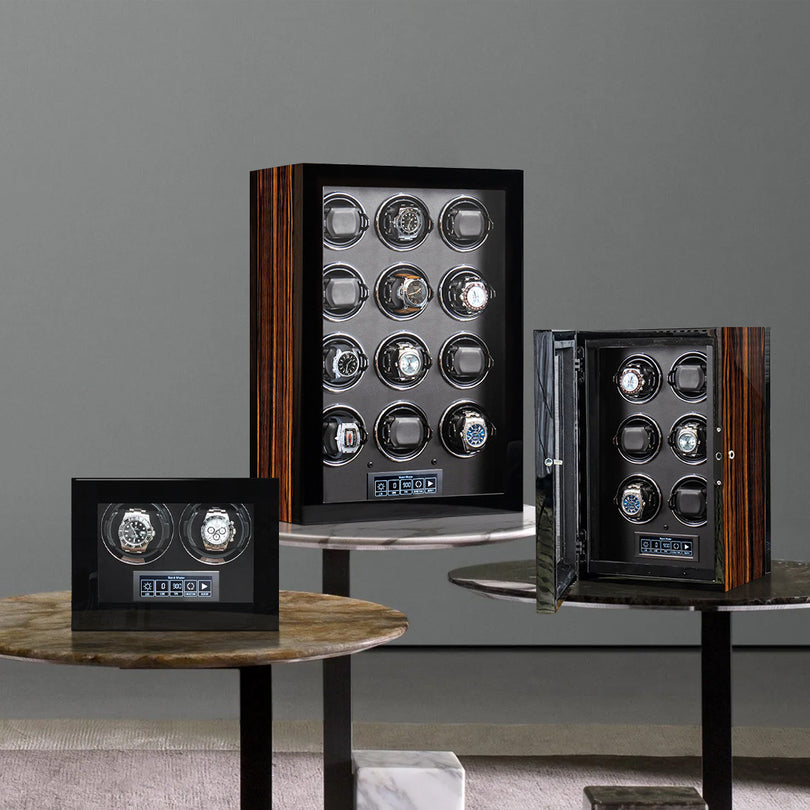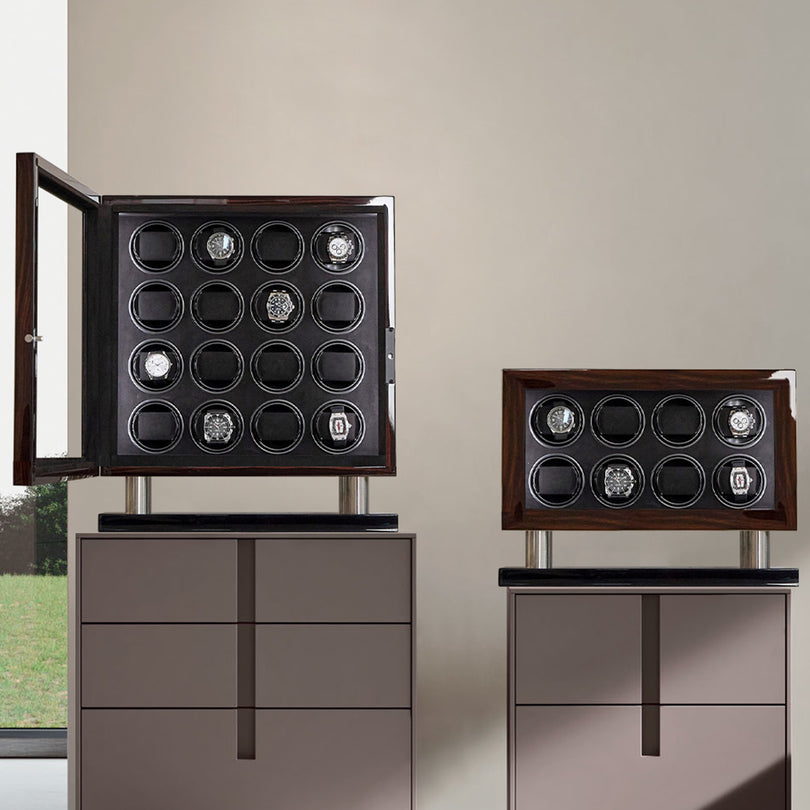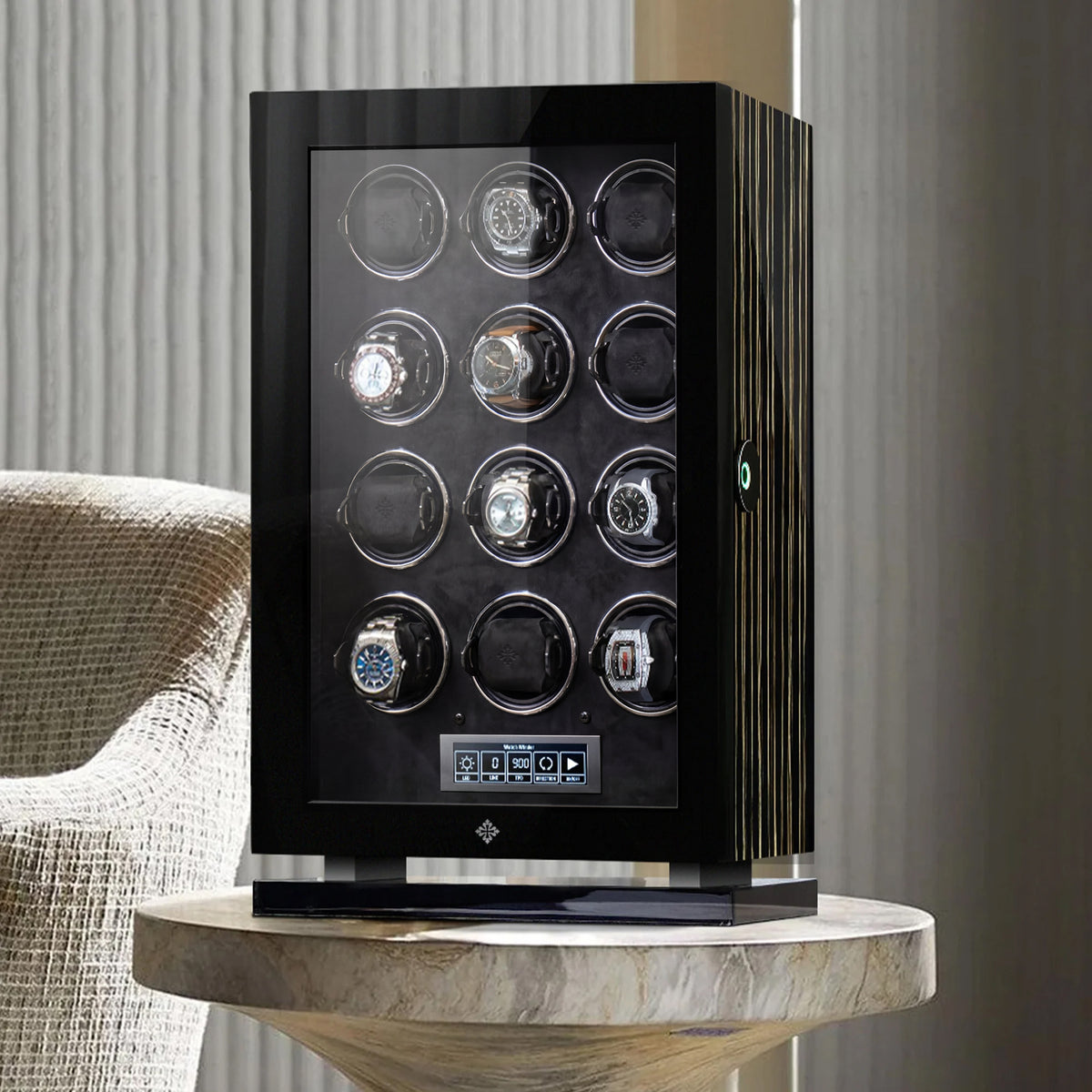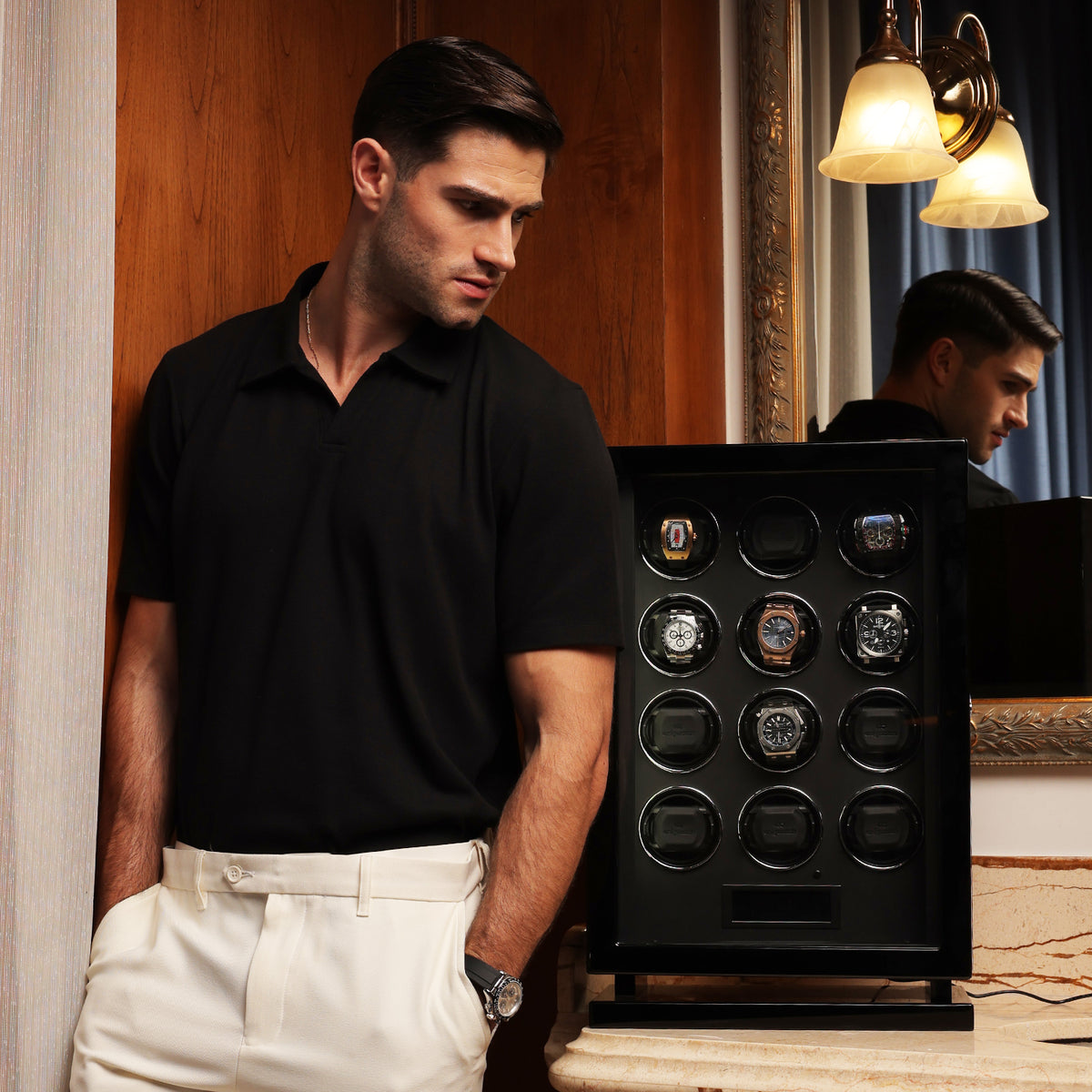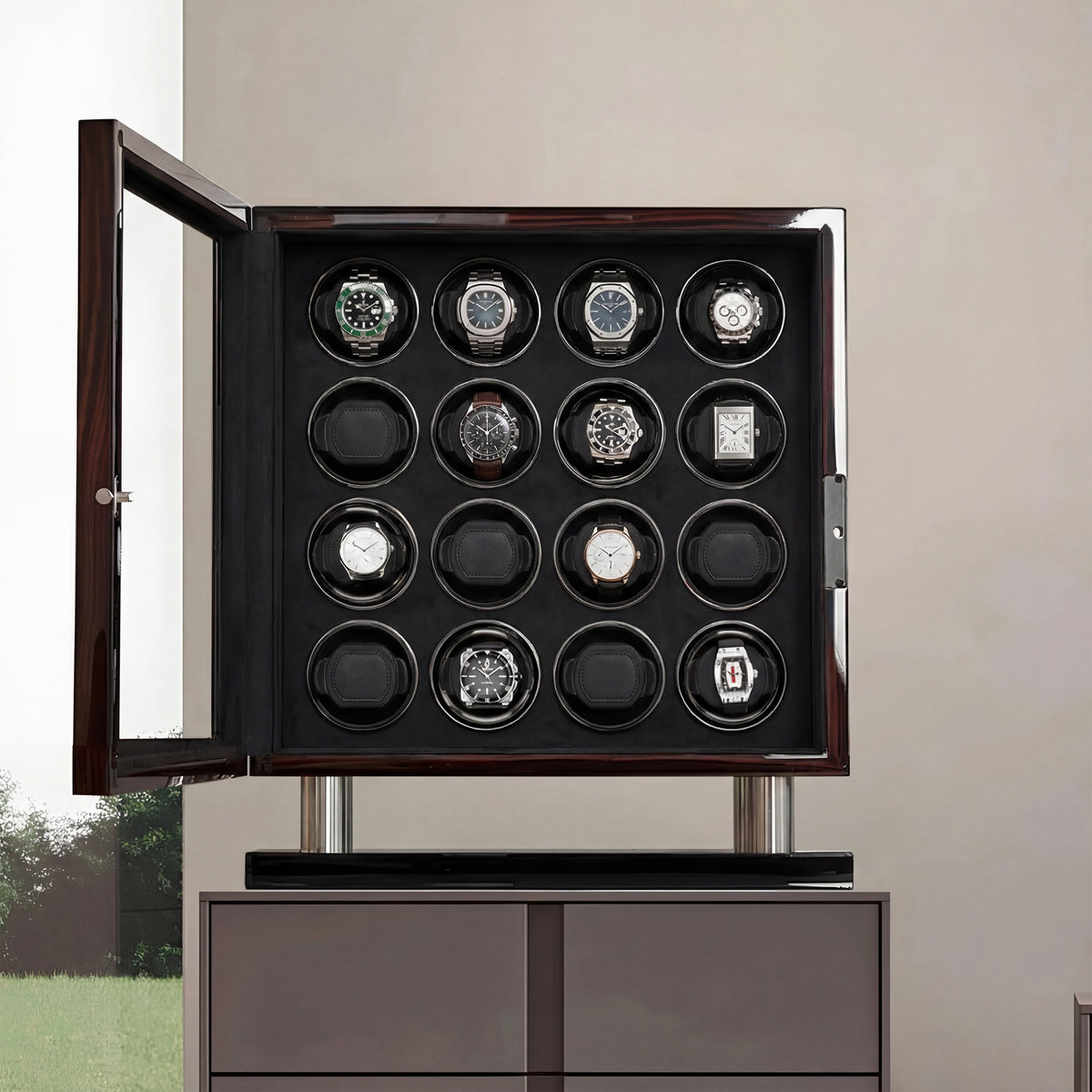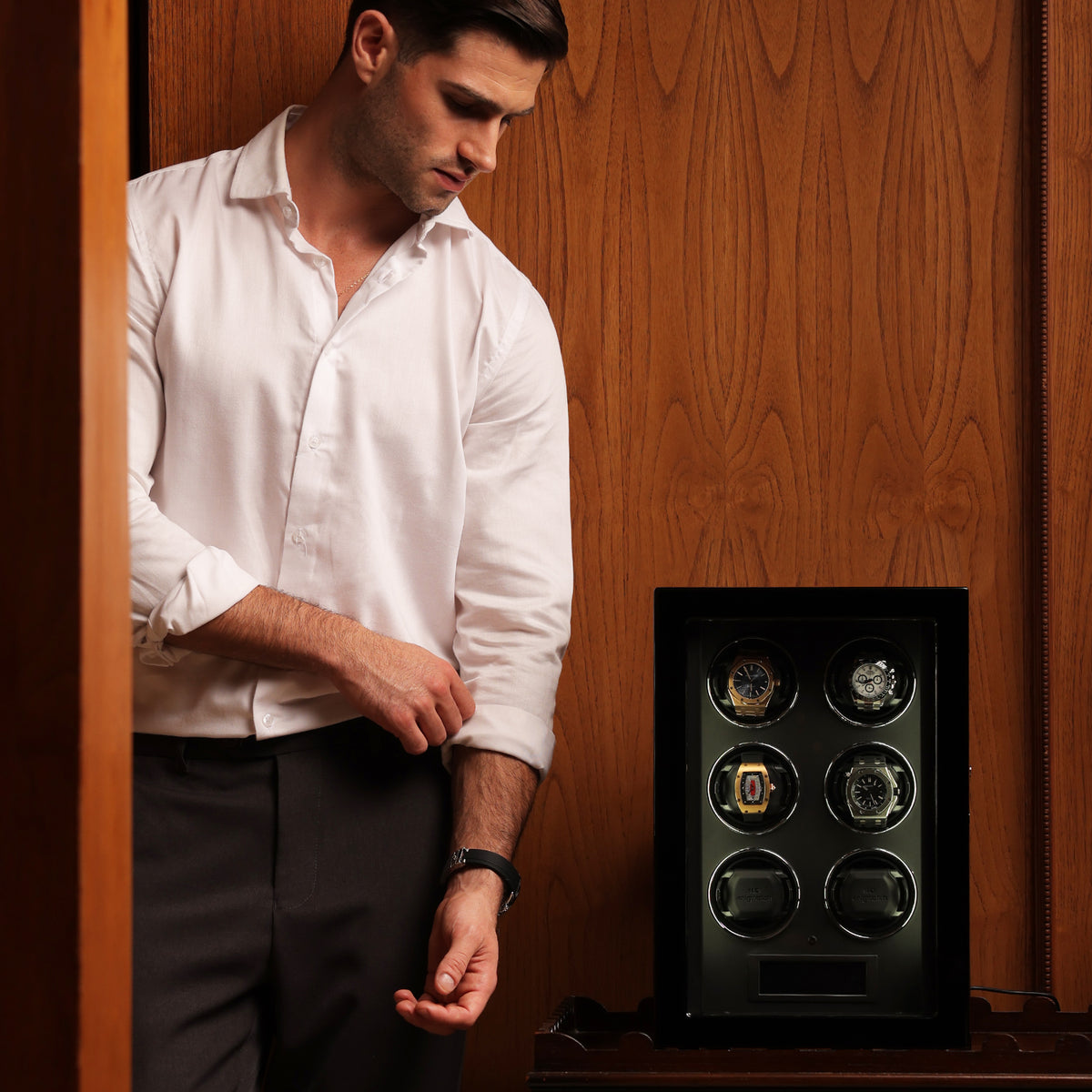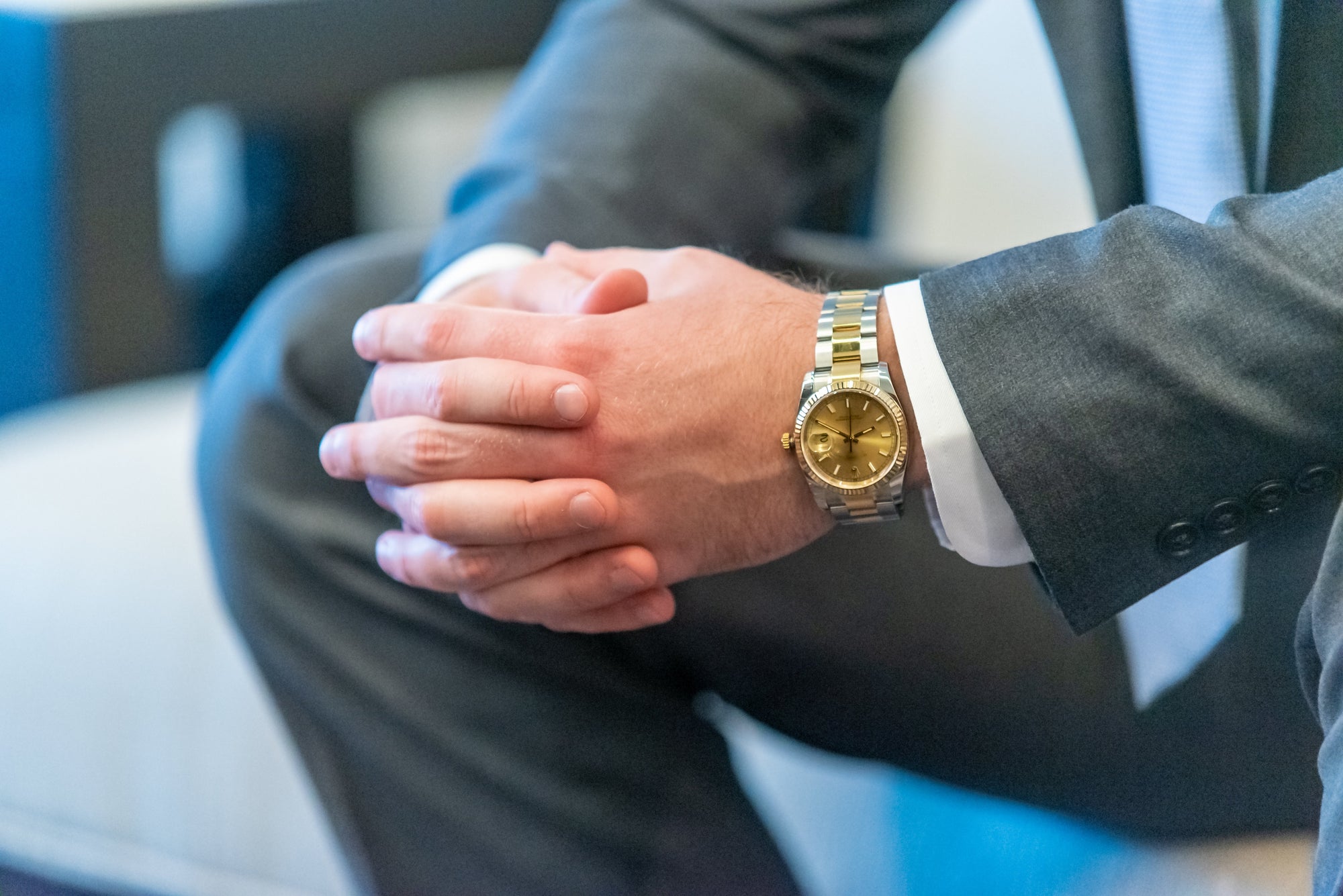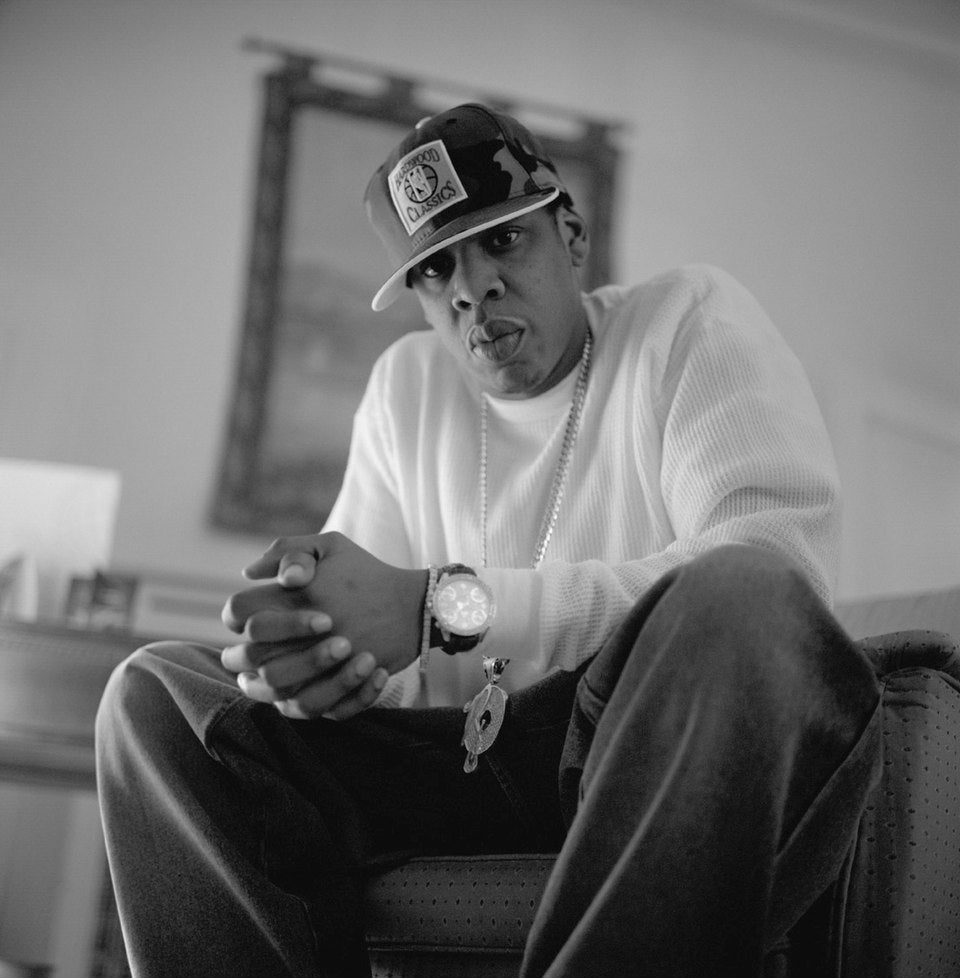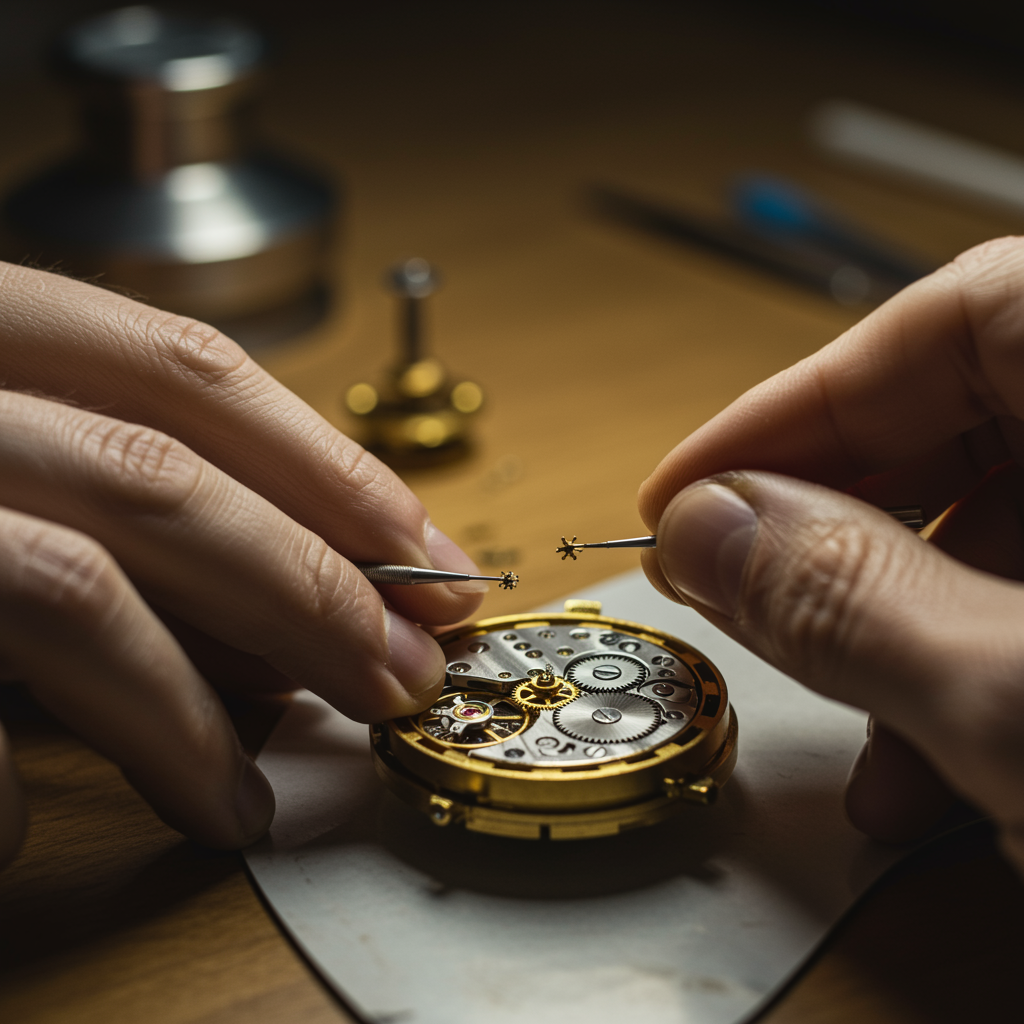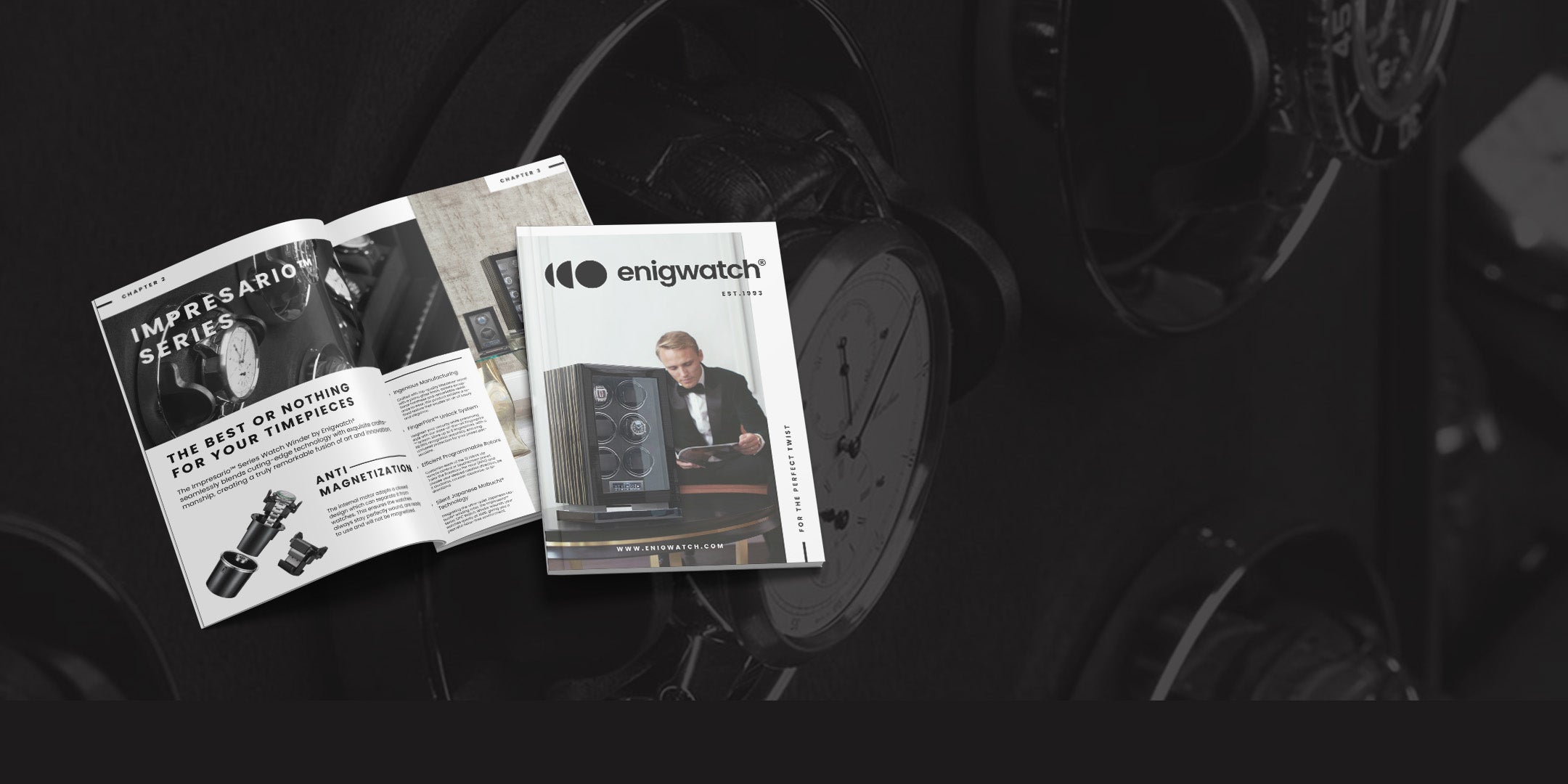When it comes to luxury sports watches, the Rolex Daytona and Omega Speedmaster are two of the most iconic models in the market. Both watches have a rich history, excellent performance, and loyal fan bases. In this article, we will compare the Rolex Daytona and Omega Speedmaster in terms of size, material, design, date display, movement, water resistance, and conclusion.
Size: Rolex Daytona vs Omega Speedmaster

When it comes to the size of the Rolex Daytona and Omega Speedmaster, there are some notable differences. The Daytona measures 40mm in diameter and 12.4mm in thickness, while the Speedmaster measures 42mm in diameter and 13.5mm in thickness.
For those who prefer a watch that sits comfortably on the wrist and does not feel too bulky, the Rolex Daytona may be the ideal option. With its 40mm diameter and slim profile of 12.4mm, the Daytona has a sleek and refined look. Despite its smaller size, the Daytona still manages to make a bold statement and exude a sense of luxury.
On the other hand, the Omega Speedmaster's larger size may appeal to those who prefer a more substantial watch. The 42mm diameter and thickness of 13.5mm give the Speedmaster a sturdy and robust feel, making it an excellent option for those who want a watch that can withstand some wear and tear.
It's worth noting that the size of a watch can also impact its readability. A larger watch face may make it easier to read the time and other complications, such as chronograph functions. However, this can be a matter of personal preference, and some people may prefer a smaller, more understated watch face.
You may also like: Luxury Watch Showdown: Richard Mille vs Rolex (2023 Review)
Material: Rolex Daytona vs Omega Speedmaster

The Rolex Daytona is available in three materials: stainless steel, yellow gold, and Everose gold. The stainless steel model is the most popular and widely available, with a sleek and modern look.
The yellow gold model has a more classic and luxurious feel, while the Everose gold model offers a more unique and sophisticated look. The bracelet options for the Daytona include a three-link Oyster bracelet or a five-link Jubilee bracelet. The Oyster bracelet is a classic design and adds to the watch's sporty appearance, while the Jubilee bracelet has a more refined and elegant feel.
The Omega Speedmaster is also available in different materials, including stainless steel, titanium, and precious metals such as gold and platinum. The stainless steel model is a popular option, offering a rugged and durable feel, while the titanium model is lighter in weight and has a more contemporary look.
The precious metal models offer a luxurious and prestigious feel, with options such as rose gold and platinum. The bracelet options for the Speedmaster include a stainless steel bracelet or a leather strap, with the leather strap adding to the watch's classic and timeless look.
Both the Rolex Daytona and Omega Speedmaster use scratch-resistant sapphire crystals for their displays. Sapphire crystal is one of the hardest materials available and offers excellent protection against scratches and impacts. This ensures that the watch's display remains clear and easy to read for years to come.
You may also like: Classic Elegance vs Modern Sportiness: Vacheron Constantin vs Rolex (2023 Review)
Design: Rolex Daytona vs Omega Speedmaster
When it comes to watch design, both the Rolex Daytona and Omega Speedmaster have distinctive and recognizable styles. The Daytona has a classic and timeless design, with a clean and elegant look that has remained virtually unchanged since its inception. The watch features three sub-dials on the dial, displaying elapsed hours, minutes, and seconds, along with a tachymeter scale on the bezel. The sub-dials provide additional functionality, allowing for precise timing and measurement of events, such as lap times.
In contrast, the Omega Speedmaster has a more rugged and sporty design, with a black dial and distinctive chronograph sub-dials. The watch features a 30-minute sub-dial at 3 o'clock, a 12-hour sub-dial at 6 o'clock, and a running seconds sub-dial at 9 o'clock. The chronograph functions are controlled by pushers on the side of the case, allowing for easy operation. The Speedmaster also features a tachymeter scale on the bezel, which is used to measure speed and distance.
You may also like: The Ultimate Showdown: Seiko vs Rolex – Which One Reigns Supreme? (2023 Review)
Date display: Rolex Daytona vs Omega Speedmaster
One key difference between the Rolex Daytona and Omega Speedmaster is the presence of a date display. While the Speedmaster features a date display at the 6 o'clock position, the Daytona does not include this feature.
For some watch enthusiasts, the absence of a date display on the Daytona may be seen as a drawback. However, others argue that the lack of a date display adds to the watch's classic and timeless design, and allows for a more simplified and clean dial layout.
On the other hand, the Omega Speedmaster's date display provides an added layer of practicality and convenience, allowing wearers to easily keep track of the current date. The date is displayed through a small window at the 6 o'clock position, which is discreet and does not detract from the watch's overall aesthetic.
It's worth noting that the inclusion of a date display is largely a matter of personal preference. Some watch enthusiasts may prioritize practicality and convenience, while others may prefer a cleaner and more streamlined dial. Ultimately, the decision between the Rolex Daytona and Omega Speedmaster may come down to individual tastes and priorities.
It's also important to consider that the absence of a date display on the Daytona is not necessarily a reflection of the watch's functionality. The Daytona is equipped with a highly accurate and reliable chronograph movement, which provides precise timekeeping and measuring of elapsed time. The watch's focus on timekeeping accuracy and precision aligns with its association with motorsports, where timing is a critical factor in determining race results.
You may also like: Rolex Date vs Datejust: Which Iconic Timepiece Is Right For You? (2023 Review)
Movement: Rolex Daytona vs Omega Speedmaster

The movements powering a watch are crucial to its performance and reliability, and the Rolex Daytona and Omega Speedmaster are no exception. Both watches are equipped with movements that have been engineered to deliver precise and accurate timekeeping.
The Rolex Daytona is powered by the Rolex Calibre 4130, a self-winding mechanical movement that was first introduced in 2000. This innovative movement was designed to improve the accuracy and reliability of the chronograph function, which is critical in the context of motorsports.
The Calibre 4130 features a vertical clutch mechanism that ensures a smooth and consistent start to the chronograph function, as well as a Parachrom hairspring that offers improved resistance to shocks and temperature variations. The movement has a power reserve of approximately 72 hours, meaning it can run for up to three days on a full charge.
The Omega Speedmaster, on the other hand, is powered by the Omega Calibre 1861, a manual-winding movement that has been in use since the 1960s. This movement has earned a reputation for its reliability and durability, thanks in part to its simple and robust design. The Calibre 1861 has a power reserve of approximately 48 hours, meaning it needs to be wound every two days or so.
While both movements are reliable and accurate, the Rolex Calibre 4130 has a slight edge in terms of technology and power reserve. The vertical clutch mechanism and Parachrom hairspring are examples of innovative features that have been incorporated into the Calibre 4130 to enhance its performance.
The longer power reserve of the Calibre 4130 also means that the watch can run for a longer period without needing to be wound or worn, which may be appealing to some watch enthusiasts.
You may also like: Innovation in Timekeeping: Rolex vs Patek Philippe Race for Watchmaking Supremacy (2023 Review)
Water resistance: Rolex Daytona vs Omega Speedmaster
The Rolex Daytona has a water resistance rating of 100 meters, while the Omega Speedmaster has a water resistance rating of 50 meters. Both watches are suitable for swimming and light water activities, but the Daytona has a better water resistance rating.
Conclusion:
The Rolex Daytona and Omega Speedmaster are both excellent luxury sports watches that offer exceptional performance, reliability, and style. The Daytona may appeal more to those who prefer a classic and timeless design, while the Speedmaster may suit those who prefer a more rugged and sporty look. Ultimately, the choice between the two comes down to personal preferences and budget.


